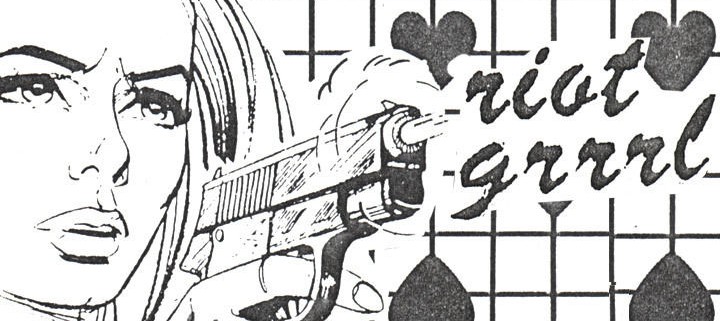Feminist zines address gender-based issues
On an aimless browsing trip through Etsy, an online marketplace where people sell vintage or handmade items, I came across a peculiar listing. Interest piqued, I clicked on the link, “Riot Grrrl nostalgia zine grab bag.” The seller was advertising a collection of mismatched pro-feminism zines produced in the early 1990s. The covers were either pink or white with black and white pictures and typewriter text on the front. One was titled Chicklet, the other Devil Girl.
According to Barnard College, a zine is “a self-publication, motivated by the desire for self-expression, not for profit.” They’re usually made using a photocopier and stapled to look like a small magazine.
Considering people don’t usually create zines for profit, zines are probably the most honest medium used to spread information and ideology. That applies especially to feminist zines, which are often pro-choice and discuss sex and other inflammatory and controversial topics. Feminist is often referred to as the “f-word,” so it definitely takes courage to create a feminist zine.
Given the definition of zines, it’s no wonder why Riot Grrrl would use these publications for their own advancement. Riot Grrrl was an underground feminist movement that started in the late 1980s and continued to the mid-1990s. Nowadays, the movement is remembered mostly via the original Riot Grrrl band Bikini Kill’s music and the countless feminist zines the movement produced during that period of time.
Unable to resist, I purchased the grab bag and immediately fell in love when it arrived. Each zine was utterly unique. Each author personalized her zine to reflect her thoughts on feminism, equal rights, puberty, boys, politics and so much more. The pages were chock-full of one-off art and personal thoughts.
I soon realized that there were hundreds of listings on Etsy for feminist zines; only a few of the listings were for old zines from the ’90s. Zines haven’t disappeared — they’ve just gone underground. It seemed that people have been producing zines for personal satisfaction and selling them online for next to nothing. While these new zines echo the Riot Grrrl zines’ women’s power mentality and black and white, the degree of sophistication is much higher. Some come in full-color, some feature digitally-rendered art and others are mostly plain text. They have names like The New Rad Feminist Bible, You Don’t Know Me, and Queen of the Neighborhood: Cutthroat Cutie. Imagination, it seems, has no limits when it comes to feminist zines.
Essentially, social media allows us to do what zines used to in the ’90s which is to say whatever we desire. I can only explain the recent flourishing of zines as a result of the need for more personal reading material in an age where being on the internet means talking to the void, hoping for someone to respond. As the concept of political, socio-economic, cultural and social equality for women and men has taken off in mainstream and fringe media over the past few years, it appears that these content creators have come out of hiding to reclaim their rightful place as feminist zinesters.
There is also something to be said about the small production scale of zines. I love knowing that I now own one of 40 or so copies of them. Honestly, reading a handcrafted work of art that contains someone else’s secrets makes me feel special. They are a labor of love. Holding a zine is akin to holding someone’s child in your hands.
It’s important to note that while growing up, I read a lot of young-adult fiction written mainly by white women. At the time, the fact that the authors of all the books I loved so much did not look like me, and that most of the books featured a Super Special Girl™ and her perpetually brooding, leather-jacket-wearing boyfriend, did not matter much to me. That is, until I realized that feminism was and is a thing.
I like to think I became the ultra-feminist — I even have an equality-demanding sticker on my laptop case to prove it. But while Gloria Steinem and bell hooks are great feminist authors, being a college student means I do not have enough time to read. Feminist zines have given me the opportunity delve into the exciting world of feminist literature on a small, intimate level.
Noorhan Maamoon is a sophomore majoring in print and digital journalism. Her column, “The Hijabi Monologues” runs on Thursdays.

